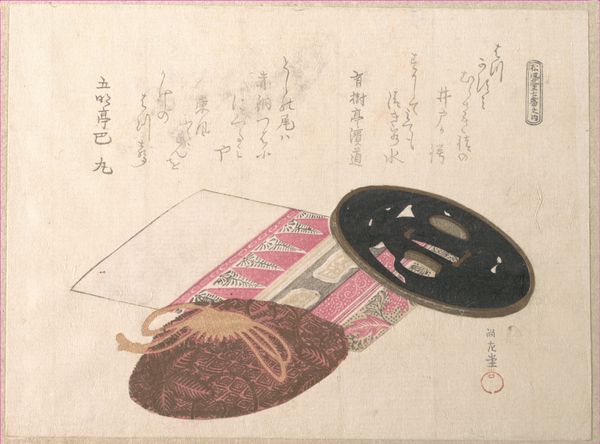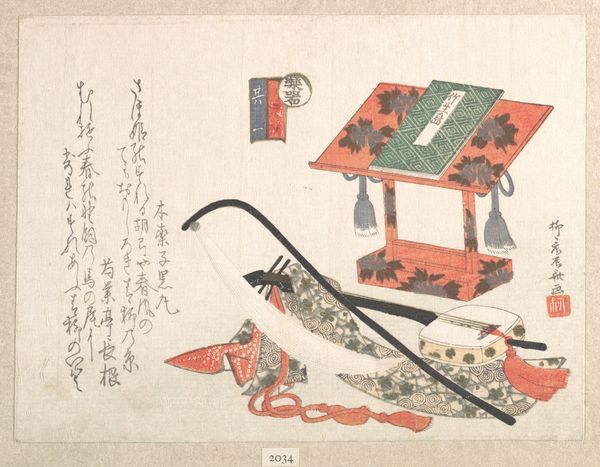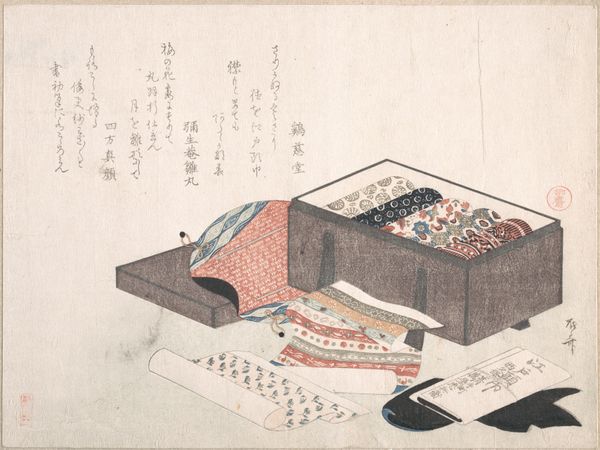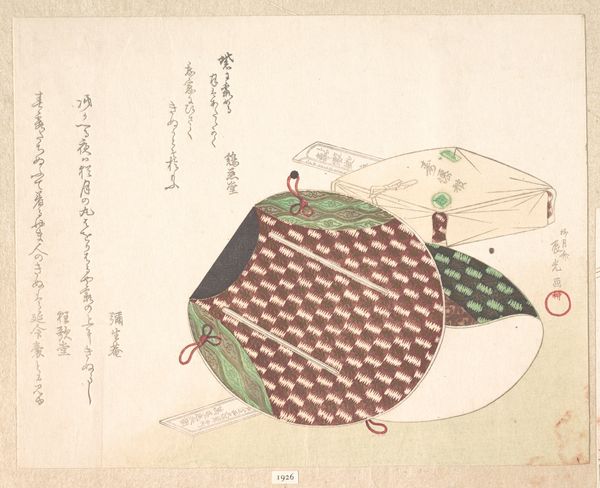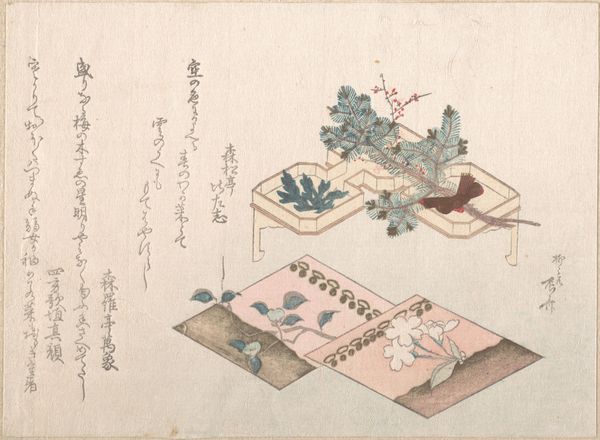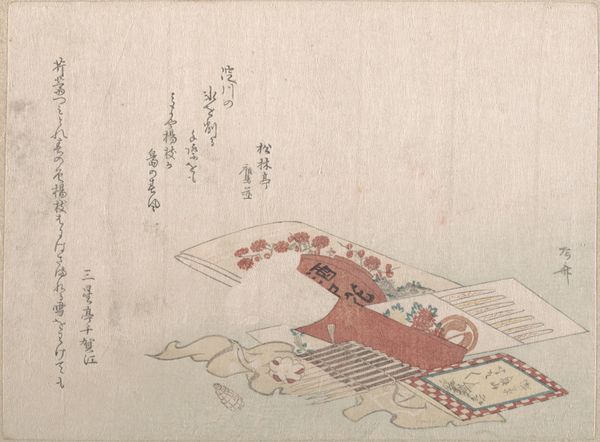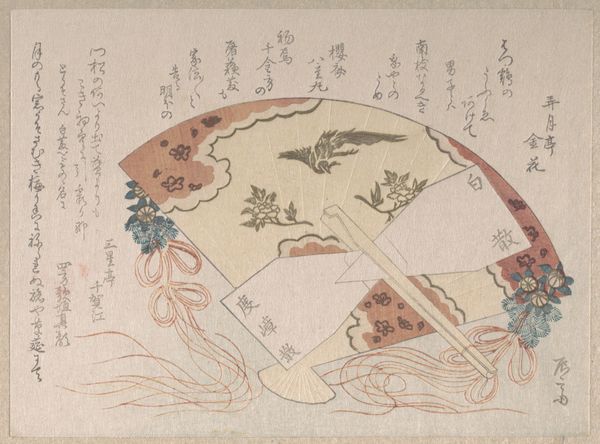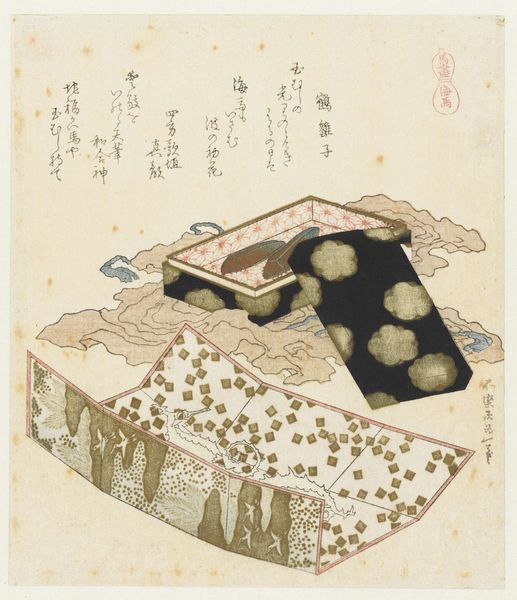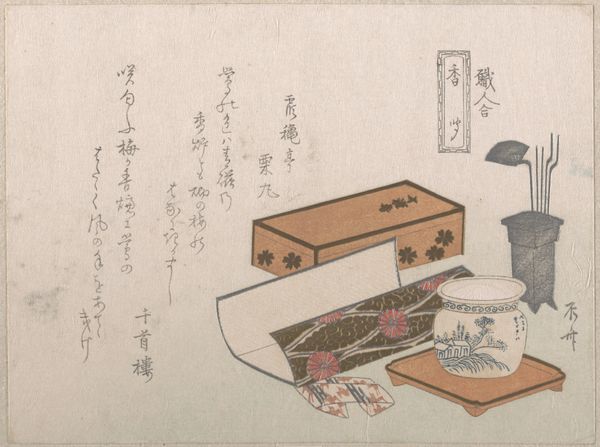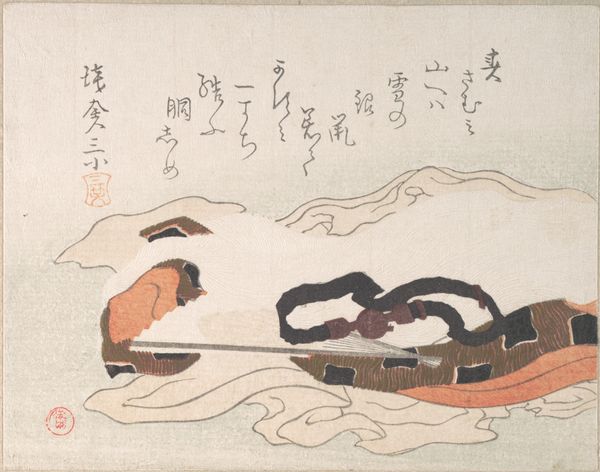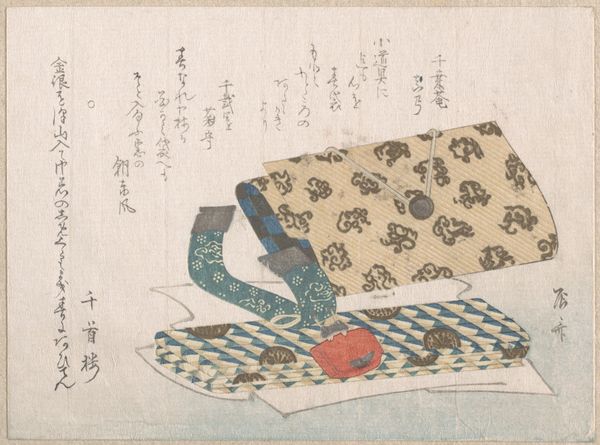
drawing, print, paper, ink
#
drawing
# print
#
asian-art
#
ukiyo-e
#
paper
#
ink
Dimensions: 8 x 10 7/8 in. (20.3 x 27.6 cm)
Copyright: Public Domain
Editor: Here we have "Set of Sword Fittings" by Shungensai, created sometime between 1768 and 1868. It's a print, a drawing done with ink on paper, belonging to the Ukiyo-e tradition. The image shows sword fittings displayed in a wooden box, alongside inscriptions. I’m struck by the almost photographic way the materials are presented, almost like a product catalogue. What stands out to you? Curator: It’s the explicit depiction of the materials themselves – the paper, the ink, the wood – and their arrangement. Think about the labor involved in creating not only the fittings themselves, these meticulously crafted objects of martial culture, but also the print depicting them. Editor: So, the print becomes a commodity in itself, reflecting a market for both martial objects and their representation? Curator: Precisely! Ukiyo-e prints were often produced and consumed on a mass scale. And the presence of text adds another layer. What do you make of that text surrounding the fittings? Editor: It looks like descriptive or poetic language, elevating the mundane presentation of these utilitarian objects, hinting perhaps at social status and taste. Does that tie into the consumption aspect you mentioned? Curator: It certainly does. Consider how the choice of paper, the quality of the ink, even the skill of the printmaker would influence the perceived value and desirability of the depicted objects and therefore contribute to notions of worth and craft. Editor: It’s interesting how focusing on the materiality and production reframes our understanding, shifting from aesthetics to the social and economic contexts of both the sword fittings and the print itself. I'll never look at a still-life the same way! Curator: And that's the power of material analysis: to reveal the hidden labor and economic forces shaping what we see.
Comments
No comments
Be the first to comment and join the conversation on the ultimate creative platform.
